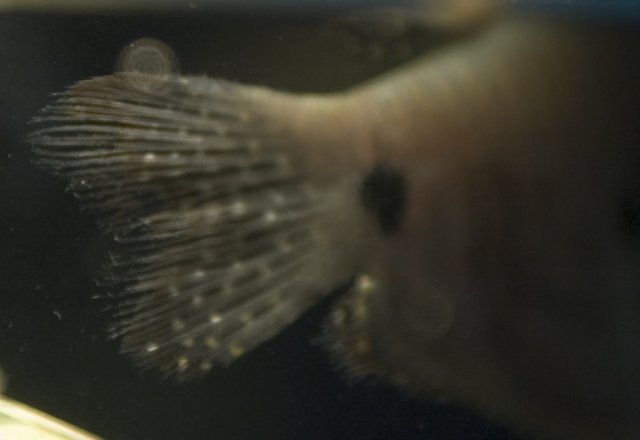if those spots on the caudal fin are not part of the fishs' normal coloration, i'm thinking your fish has a case of Ich, not fin rot. "rot" is a general term for necrotic loss of fin tissue, resulting in split or ragged fins. It is usually the edge of the fin that is attacked, although occasionally a hole may appear in the middle of the fin. The appearance of fin rot can vary between a distinct, semi-circular "bite" shape and a "shredded" effect. The edge of the lesion is usually opaque or whitish. In advanced cases there may be some reddening or inflammation. The main threat from this fish disease if left untreated is a slow degradation of the entire fin along with the fin rays followed by subsequent invasion of the fish’s body, leading to peduncle disease if the caudal (tail) fin is involved, or saddleback ulcer if the dorsal (top) fin is affected. Secondary fungal infections are not uncommon.
There are a number of bacteria that can cause fin rot, the most common being Cytophaga. the disease involves opportunistic bacteria such as Aeromonas, Pseudomonas or Flexibacter that abound in all aquatic environments. This disease factor has been called many names, Chorndococcus, Cytophage, Flexibacter, Myxobacterium, once even known as Flavobacterium. The most common species is columnaris.
treatment recommended is Chlortetracycline at 20 mg/liter as a continuous bath for 5 days. a 50 percent water change followed by a second dose of chlortetracycline.
describe your tank in terms of number of fish, tank size and water parameters (ammonia, nitrite and nitrate). Ich or fin rot is related to unnaceptable water quality.
 if it is fin rot how would you suggest treating it?
if it is fin rot how would you suggest treating it?



